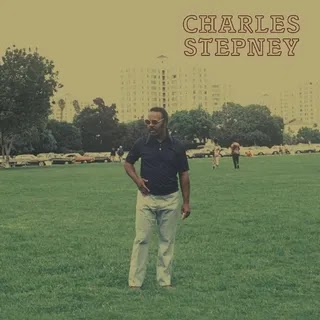Famous for his widescreen imagination, the legendary R&B producer and arranger helped define Chicago soul. This anthology of home recordings uncovered by his daughters reveals his more intimate side.
A legendary R&B producer and arranger that sample-flipping rap producers turned into a hip-hop touchstone, Charles Stepney also made prismatic one-man-band demos in his Chicago South Side basement, working up songs for Earth, Wind & Fire, Rotary Connection, and other collaborators during a dazzlingly fruitful decade before a heart attack killed him in 1976 at age 45. “Charles was such a gorgeous musician,” Richard Rudolph, lyricist for Rotary Connection, told Wax Poetics in 2007. “He’d play all these beautiful things, and give me the tapes with the melodies on them, and I’d ride around and—God, it was fantastic—try to write to them.”
It’s sweet to imagine that scenario while listening to Step on Step, a compilation of previously unreleased Stepney demos uncovered by his daughters Eibur, Charlene, and Chanté. The album is part of a multimedia project to commemorate the work of their dad, a crate-diggers’ hero whose widescreen imagination helped define Chicago soul, in turn birthing a generation of Windy City rap innovators—Common, Kanye, Lupe, Chance, Noname, Jamila Woods—many of whom would sample his work, re-enacting Rudolph’s experience. (It wasn’t just a local phenomena; when his daughter, comedian Maya Rudolph, first met Q-Tip—who famously incorporated Rotary Connection’s “Memory Band” in A Tribe Called Quest’s “Bonita Applebum”—she told him, “Your band put me through college.”)
Step on Step, though, shows an unfamiliar side of Stepney, whose signature maximalism incorporated call-and-response choral arrangements, jazzy brass pageantry, and swirling storm clouds of strings, often drawing on the talent of the Chicago Symphony Orchestra. Witness the majesty of “Les Fleurs,” a solo signature of Rotary Connection’s Minnie Riperton, Maya’s mom and Rudolph’s wife—an oft-sampled gem that underscored the credits of Jordan Peele’s Us and, more recently, capped the controversial “Big Payback” episode of Atlanta. Stepney came up as a jazz pianist and vibraphonist, recording with Chicago saxophonist Eddie Harris in the early ’60s, and those instruments dominate these demos alongside a new acquisition: an early Moog synthesizer, which by all indications Stepney quickly mastered. “Gimme Some Sugar,” “Daddy’s Diddies,” and “Gotta Dig It to Dig It” are effervescent synth-funk workouts in the vein of Stevie Wonder’s contemporaneous Talking Book and Innervisions; “Daddy’s Diddies” also features Stepney’s delightful, multi-tracked scat-singing, the set’s only vocal performance: a South Side echo of the joyous vocal play of Milton Nascimento and Lô Borges’ “Cravo E Canela” from Clube Da Esquina, another early-’70s touchstone.
The draw here for many listeners will be the blueprints of classic recordings. “Black Gold” is a piano sketch for Rotary Connection’s psych-soul revival meeting “I Am the Black Gold of the Sun,” a Stepney masterpiece that triggered one of his periodic revivals when house-music heroes Masters at Work remade it in 1997 for their Nuyorican Soul project. Stepney’s “That’s the Way of the World” is a fully imagined realization of the 1975 Earth, Wind & Fire hit, a watercolor of Moog melodies, while “Imagination,” played on what sound like electric piano and organ against a skeletal drum-machine beat, distills the brassy falsetto gospel-soul highlight from Spirit, the 1976 album the group was creating with Stepney when he passed. (In one of the narrated footnotes sprinkled through the compilation, one of his daughters mentions her plans to use the recording to walk her down the aisle at her wedding in her late father’s absence.)
The downscaled intimacy of Step on Step may or may not be an accurate picture of the solo album Stepney had planned one day to record. Its 23 tracks—fully developed songs plus fragments and ephemera—do capture his rich sense of melody and counterpoint, flair for embellishment, and modular approach to composing; its mosaic format recalls the “segues” that Stepney and soul-folk singer Terry Callier used on the latter’s sublime Occasional Rain while laying out a banquet of stems for future beatmakers to repurpose. But as a portrait of an artist whose defining achievements were ultimately collaborative and monumental, the miniaturism showcased here is sometimes frustrating, especially as no one has yet ventured a survey like what Ace Records has done for Motown psych-soul swami Norman Whitfield and Sound of Philadelphia orchestral-soul architect Thom Bell, producer peers that Stepney is every inch the equal of and then some. It’s overdue. It’d be wonderful to hear his work with EW&F, Callier, and Rotary Connection alongside the Afro-Brazilian jazz-funk of Ramsey Lewis’ Salongo, the psych-blues freakouts of The Howlin’ Wolf Album and Muddy Waters’ Electric Mud (fueled by future Miles Davis hire Pete Cosey), and Stepney’s other Chess/Cadet/GRT Records productions: Riperton’s lush solo debut Come to My Garden, the Dells’ mighty Dionne Warwick/Burt Bacharach tribute, etc. Hopefully this set—together with a forthcoming documentary and the formation of Rotary Connection 222, a new repertory outfit of Stepney offsprings both spiritual (Junius Paul, Makaya McCraven) and literal (granddaughter Brandice Manuel)—will spur a lasting reappraisal of a man whose expansive cosmic soul feels as inspiring and necessary now as when it was first made.



0 comments:
Post a Comment